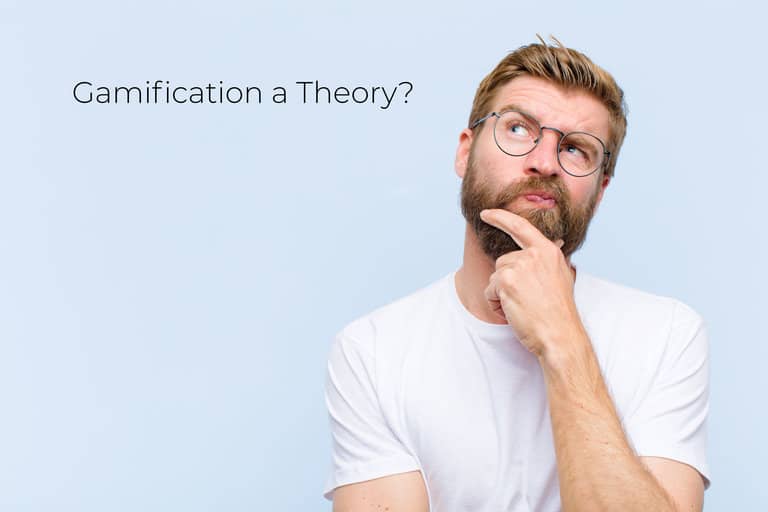
While learning everything I can about gamification I realized the difficulty of classifying what gamification actually is. Is it a theory, a concept, a hypothesis, or what is it exactly? So I went ahead and read dozens of academic research papers and tried to look for an answer.
Gamification is not a theory. Researchers in 2015 have defined gamification as a concept to improve user engagement, however, researchers in 2017 have defined gamification as a design technique. Academia is still at odds if gamification is a concept or a design technique.
This sounds rather complicated I know. But let me try to explain why gamification is not a theory and what that means.
Why gamification is not a theory.
Bevor we can determine if gamification is a theory we need to quickly check what the word “theory” means from a scientific standpoint.
A theory can be called a theory if a number of explanations (hypotheses), for observations have turned out to be true. Sounds complicated, I know let me give you a quick example.
If you’re lucky then it is currently bright outside when you look out the window, this is a simple fact and undeniably true.
The same would be as if you look out the window and it would be raining, this is simply an observation you have made.
Now we would try to come up with a number of explanations for why it is bright outside. Such as, it is bright outside because the sun is up.
Academic Fact: This explanation, or this attempt of explainging why it is bright outside is classieifed in academy as a hypothesis.
There can be a number of different explanations why it is bright outside as well, however, the point is though that you can verify your explanation by testing it.
So in our example, we would simply walk out the door and check if our idea of why it is bright outside, which was that the sun is up is true.
And if you walk outside and the sun is up then congratulations, your proposed explanation is true!
Now when enough proposed explanations have been tested and proven valid they formulate a theory.
So for example, if you test that eating vegetables and less junk food is improving your health, and you’ve proven this in a number of different ways then you could develop a theory of vegetables improving the health of a human being.
So a theory is basically a way of us humans knowing that something works in a specific way, based on a number of experiments and observations.
If we look now at the description of gamification, which is applying game elements to a non-game environment, then the definition of a theory does not seem to fit so well.
However, if you say something such as these guys here, which suggests that there is a “Theory of Gamified Learning”.
This says that gamification can affect learning in specific ways, then you can assume that there have been enough observations and experiments to prove that their theory is true and gamification does in fact affect learning.
The difference is that the “Theory of Gamified Learning” can be proven and tested whereas the simple description of gamification, applying elements from games to non-game environments, is just a description of what gamification is doing.
So it seems that gamification is not a theory, but what is then instead?
Gamification is a concept or a design technique…
..depending on the researcher and his originating research studies.
So what I have found in reading dozens of research articles about gamification, is that gamification is either a concept or it is a design technique.
And the only explanation I have for this is that the researchers who write about gamification are mainly grounded in the human-computer interaction field.
Human-Computer-Interaction (in short HCI) is a complex and multidisciplinary field that focuses mainly on a user-oriented approach to the design of modern computer systems.
HCI basically tries to find a way to make the interaction between a human and a computer as easy as possible. I have found a quick article about it if you want to learn more about HCI.
So for them, it seems that gamification is either a simple design technique that you can apply to get a certain result.
Or it is an entire concept found within the overall goal of improving the user experience for systems using a rather gameful design.

This is basically the opinion of the researchers who created this article. The article has also been sited more than 500 times which indicates that the research seems to hold some interesting points of view.
However the article has been published in 2015 and since the only other article I found about classifying what gamification is, is the one article that defines gamification as a design technique published in 2017.
Considering what we know about gamification, its many different game elements (such as points, or group quests and such) it does make sense to define gamification as a broader concept, which simply tries to create more engagement in using a service for example.
Especially since the concept of gamification can be applied to almost any scenario in which you want to drive the engagement numbers.
